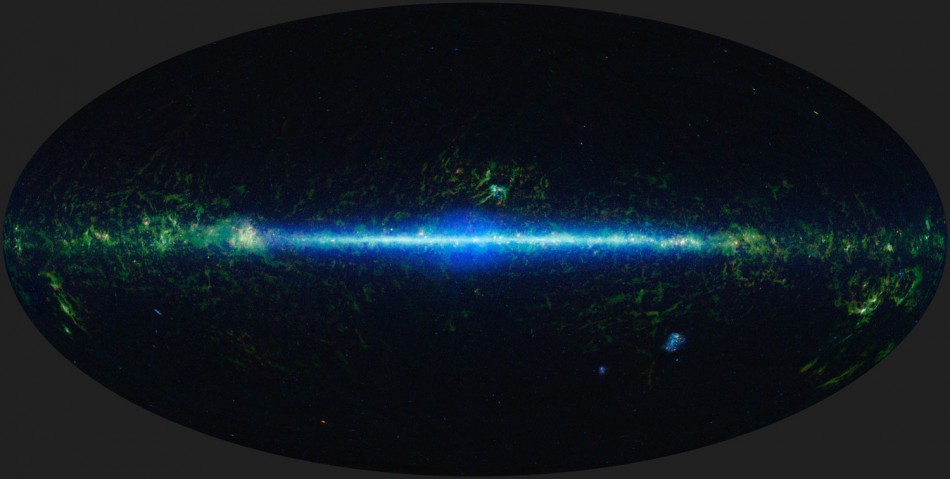Cosmic Atlas of Whole Space in One Photo by Nasa’s Wise Mission
Nasa's Wide-field Infrared Survey Explorer (Wise) mission has released a stunning stellar image of the entire infrared sky or the universe comprising over half billion stars, galaxies and other objects.
The new cosmic atlas was captured using four infrared wavelengths of light and contains everything from asteroids to distant galaxies.
"Today, Wise delivers the fruit of 14 years of effort to the astronomical community," said Edward Wright, Wise principal investigator at UCLA.
Edward first started working on the mission back in the year 1998 with other team members. The atlas comprises over 18,000 images covering the sky and a catalog listing the infrared properties of more than 560 million individual objects.
Many of these stars and asteroids have never been seen in previous images captured by Wise and Nasa.
Launched in Dec 2009, Wise stellar mapping has facilitated a better understanding of the cosmic world collecting millions of images using various techniques.
Wise observations have led to numerous discoveries, including the elusive, coolest class of stars. Astronomers hunted for these failed stars, called "Y-dwarfs," for more than a decade. Because they have been cooling since their formation, they don't shine in visible light and could not be spotted until Wise mapped the sky with its infrared vision.
Wise also took a poll of near-earth asteroids, finding there are significantly fewer mid-size objects than previously thought. It also determined Nasa has found more than 90 per cent of the largest near-earth asteroids.
Apart from this, there were a number of other "unexpected" discoveries including the first known "Trojan" asteroids that shares the same orbital path around the sun as earth.
"With the release of the all-sky catalog and atlas, Wise joins the pantheon of great sky surveys that have led to many remarkable discoveries about the universe," said Roc Cutri, who leads the Wise data processing and archiving effort at the Infrared and Processing Analysis Center at the California Institute of Technology in Pasadena. "It will be exciting and rewarding to see the innovative ways the science and educational communities will use Wise in their studies now that they have the data at their fingertips."
Catch a glimpse of the Wise Universe photos:


© Copyright IBTimes 2025. All rights reserved.





















